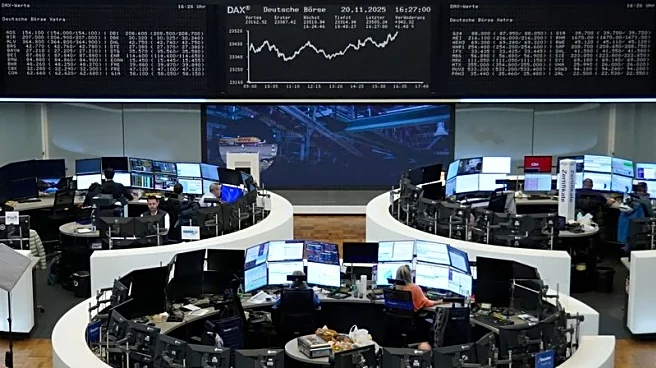What's Happening?
Researchers from the Karlsruhe Institute of Technology (KIT), in collaboration with the University of Tokyo and RIKEN Center for Emergent Matter Science, have developed a novel magnetic material known
as a p-wave magnet. This material features a unique electronic structure where electron spins arrange themselves in a helix shape, resulting in lateral deflection of electric current. The development, published in the journal Nature, suggests potential applications in creating smaller and more efficient computer chips. The p-wave magnet combines several metals, and its spins exhibit a 360-degree rotation over a short atomic distance, leading to a giant anomalous Hall effect. This effect allows electrons to be deflected laterally without the need for a strong magnetic field, offering new opportunities for fundamental research in magnetism.
Why It's Important?
The development of the p-wave magnet represents a significant advancement in materials science, particularly in the field of magnetism. By enabling lateral deflection of electric current, this material could lead to the production of more efficient computer chips, potentially revolutionizing the electronics industry. The ability to manipulate electron spins in such a precise manner opens up new possibilities for designing materials with tailored magnetic and electronic properties. This could have far-reaching implications for technology, including improvements in data storage, processing speeds, and energy efficiency. The research also highlights the importance of international collaboration in scientific innovation, as it involves contributions from leading institutions in Japan and Germany.















